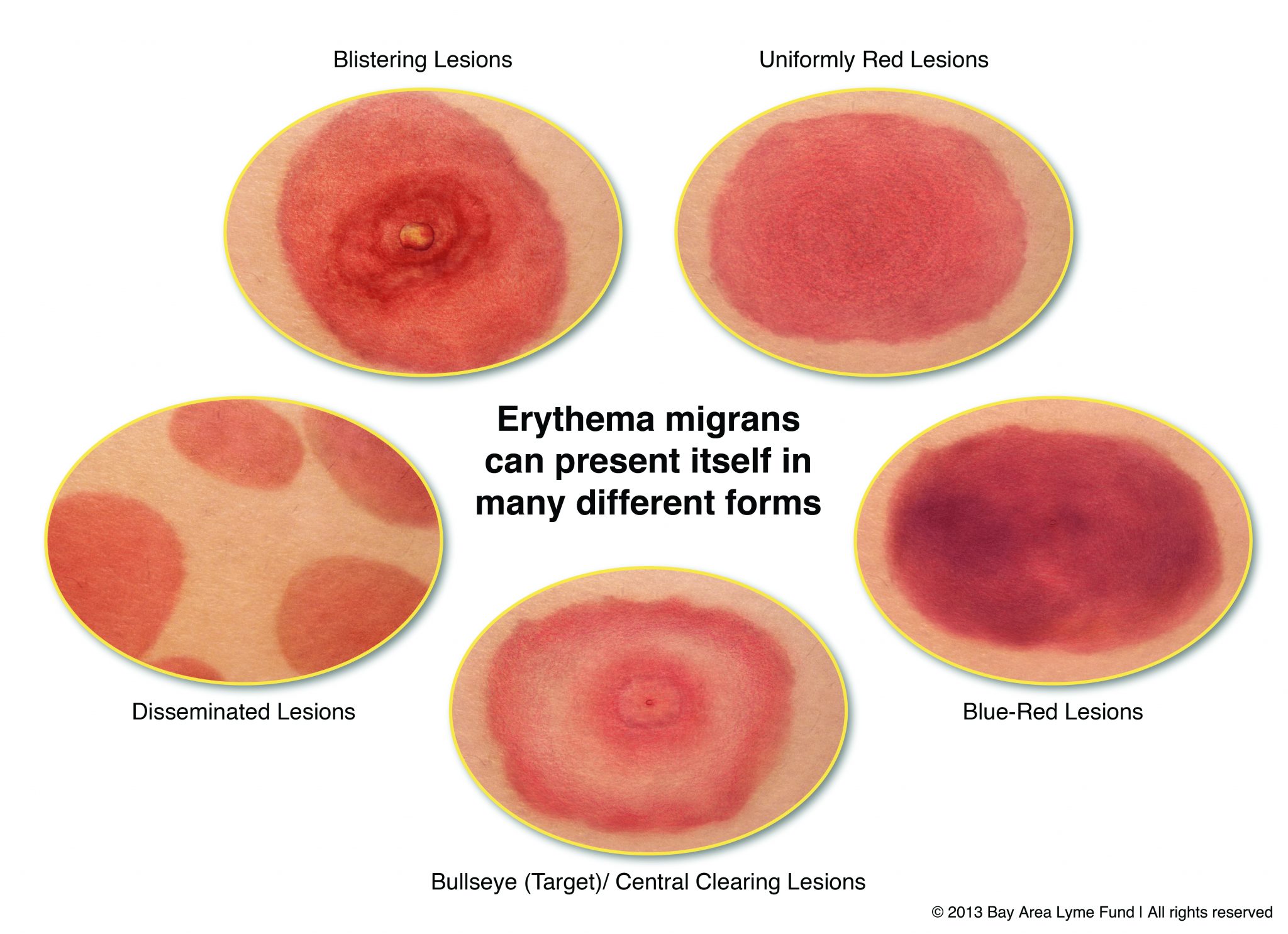

Tick bite infections may be difficult to diagnose but an early recognition makes treatment easier and can help avoid severe complications. Some infections, however, may require clinical intervention or at worse, a hospital confinement although a rare occurrence. People living in high risk areas can also talk to their healthcare provider regarding Lyme disease vaccinations.Though these aren’t fool proof, they can certainly prevent 80% of Tick bite Lyme disease bullseye rash and related symptoms.Diseases resulting from tick bites vary and some of them can be managed on your own with some simple remedies available at home. There are a couple of FDA approved tests that can diagnose the condition accurately. The area where you live and the tick bite bullseye rash will be the greatest clues that can help your doctor determine exact diagnosis and course of action to take. You might also need to give your blood sample for lab analysis. You must provide him/her with exact details regarding how you might have been infected. Diagnosis and treatment for Lyme disease tick bite symptomsĪs seen above the disease can take any course, so it is best to seek the guidance of a healthcare expert. Nearly 5% of untreated patients develop neurological symptoms, shooting pains, memory problems, and numbness in hands or feet for months or years following the tick bite infection. Nearly 60% people who do not get treated immediately following the bullseye rash tend to develop lifelong joint problems and arthritis. Lymes disease is called the great imitator since it mimics many diseases and most people are not even aware of being infected initially.

In severe cases, Lyme’s disease bullseye rash can turn very serious causing permanent nerve damage, or disabling heart failure.Memory problems, inability to concentrate.

Dizziness and light-headedness and heart palpitations.Cough and cold or other respiratory signs.Pain in the ears, hearing loss, ringing sensation in the ears.Shooting pains that disturb sleep at night-time.Facial or Bells’ Palsy with loss of sensation on the face or sides of mouth.Painful, swollen joints and lymph nodes-usually the knees and larger joints get afflicted.Typically it may be seen in the groin, back, arms, thighs etc. The Lyme disease bullseye rash might be itchy, warm to touch, or painful and can occur on any region of the body.However, since these are common symptoms that mimic other diseases, Lyme’s tends to go unnoticed in the first few weeks. Fever, fatigue, muscle aches and headaches are common.The rash itself might disappear within a short time: a couple of days or weeks but other symptoms might appear.Some people get a tick bite swelling in the area which goes down within a day or two.Nearly 7 to 8 out of every 10 bitten individuals develop this rash. Typical period for this localized rash to appear is 3-30 days. As stated above it starts off as a target shaped bullseye rash that grows and spreads.Lyme disease symptoms usually occur in phases: Following an incubation period of few days or weeks, a reddish target like mark starts to appear in the bitten region. The ticks transmit an organism called Borrelia Burgdorferi which enters the host’s bloodstream.

However, most bites tend to go unnoticed since the ticks are very small. Lyme disease bullseye rash is seen in nearly 8 out of 10 people following a tick bite. Tick Bite Lyme Disease Symptoms: How long does the Lyme disease bullseye rash last? The lone star or deer tick causing the disease came closer to human residences where people were apparently bitten while mowing their lawns, hiking in wooded, grassy regions or through their family pets. More and more cases of tick bites became prevalent in these parts. Owing to the uncurbed deer population, the number of deer ticks in the region started to increase. This gave it the name for which it is well known today. The history of the disease can be traced back to 1975 in United States, where the symptoms of rheumatoid arthritis started being seen in large number of cases in Lyme, Connecticut area. In this guide, we will study tick bite Lyme disease bullseye rash and its other symptoms in detail.


 0 kommentar(er)
0 kommentar(er)
